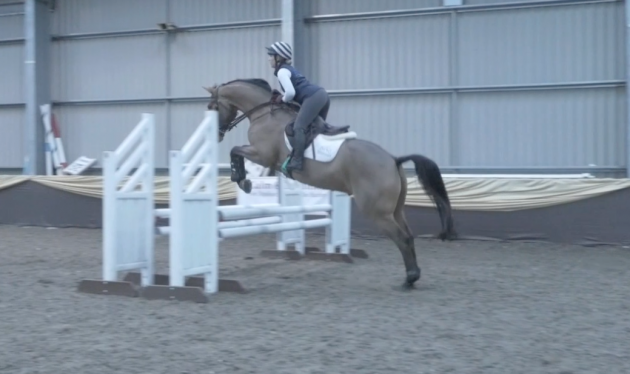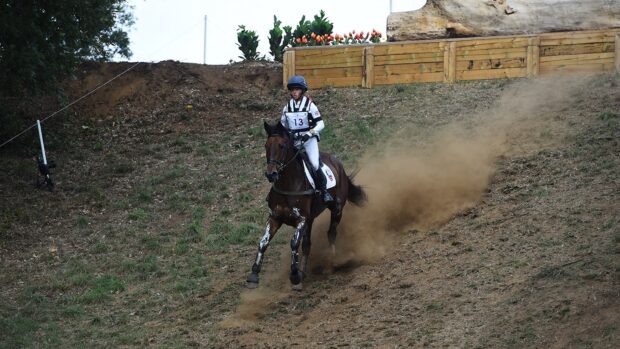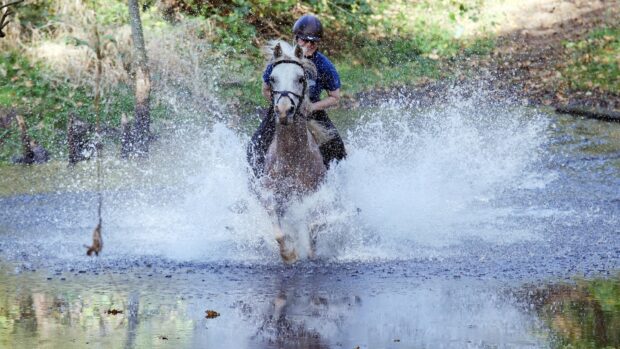Caroline Moore, former five-star eventer and British Eventing national under-18 coach and junior team coach, explains how to teach a horse and rider to turn onto a new line over a fence
Aims of the exercise:
- Develop balance and confidence with a fence on a turning line
- Develop rider strength through inside heel
- To improve horse’s suppleness
This is a really important exercise to do a lot in training. You are always going to get what I call a turning fence in competition, where your horse has to follow your steering aids, either through a serpentine, a change of direction or just holding your line over a fence.
This exercise looks to develop a horse’s balance, confidence and safety when turning over a fence. The most important thing is that the rider needs to use a really good, strong weight down the inside heel and keep the inside shoulder forward so they keep themselves in balance and so that the horse can then stay in balance going to the new direction. It’s really important to use a guiding aid rather than a turning aid — this keeps the instruction to turn very subtle and it is very useful for the horse so that he doesn’t react against it and lose his shoulder.
You don’t have to use cavaletti — you can use any type of jump. I like to use them because it makes the hind leg work really hard and it also makes the horse careful.
To start with, I just go round the outside of the middle fence so that you can just practice doing a nice little turn on a gentle curve.
Use a small middle fence, but get the horse landing to the new direction. The rider really needs to look to the new direction and put their body on the line over the middle fence, putting a new inside heel down.
You can build this up so that you ride a full serpentine through the exercise. It’s really important to work hard to try and stay on the inside of centre, as this then makes the horse work hard with the inside front leg, which is a great part of this exercise. This brings the inside front leg higher than the outside one and encourages the horse to become more athletic.
You will see I then put a flag near the centre of the middle fence to encourage the rider to stay on the inside line.
Common mistakes for this exercise include:
- The rider’s weight slipping to the outside
- Their inside hip collapses
- The rider’s inside knee comes up
As a rider you have got to look to the new direction, control the horse’s shoulder and then start thinking about the new direction again, so you really improve the horse’s suppleness and ability to follow the rider’s eye and hand.
Points to be aware of:
- Keeping strength and balance to the inside
- Rider sighting the next fence
- Maintaining horse’s outside shoulder
- Praise and reward
More expert training advice from Caroline:

Holding a straight line across country — the difference between success and failure
Caroline Moore, former five-star eventer and British Eventing national under-18 coach and junior team coach, explains how to teach a

Subscribe to Horse & Hound magazine today – and enjoy unlimited website access all year round
For all the latest news analysis, competition reports, interviews, features and much more, don’t miss Horse & Hound magazine, on sale every Thursday.




